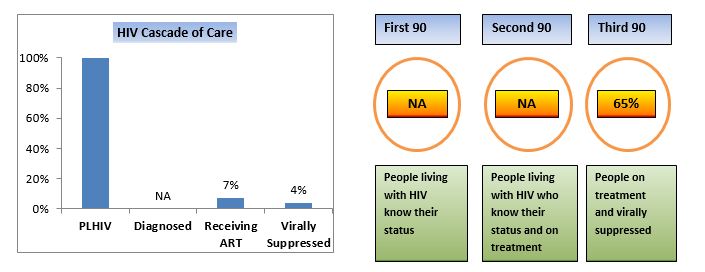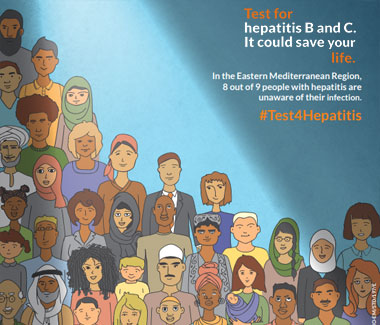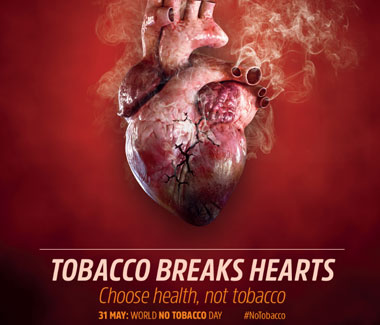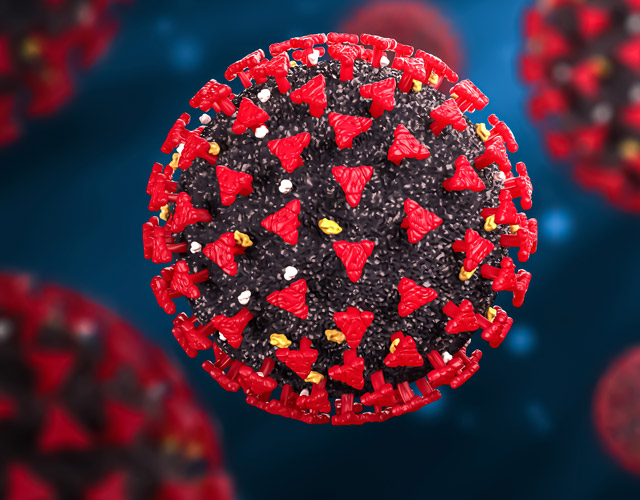Copyright notice
© Copyright World Health Organization (WHO), 2023. All Rights Reserved.
The information in the various pages of the WHO web sites is issued by the World Health Organization for general distribution. The information presented is protected under the Berne Convention for the Protection of Literature and Artistic works, under other international conventions and under national laws on copyright and neighboring rights. Extracts of the information in the web site may be reviewed, reproduced or translated for research or private study but not for sale or for use in conjunction with commercial purposes. Any use of information in the web site should be accompanied by an acknowledgment of WHO as the source, citing the uniform resource locator (URL) of the article. Reproduction or translation of substantial portions of the web site, or any use other than for educational or other non-commercial purposes, require explicit, prior authorization in writing. Applications and enquiries should be addressed to the programme responsible for the page used.
The designations employed and the presentation of the information in this web site do not imply the expression of any opinion whatsoever on the part of the Secretariat of the World Health Organization concerning the legal status of any country, territory, city or area or of its authorities, or concerning the delimitation of its frontiers or boundaries. Dotted lines on maps represent approximate border lines for which there may not be full agreement.
The mention of specific companies or of certain manufacturers' products does not imply that they are endorsed or recommended by the World Health Organization in preference to others of a similar nature that are not mentioned. Errors and omissions excepted, the names of proprietary products are distinguished by initial capital letters.
The World Health Organization does not warrant that the information contained in the web site is complete and correct and shall not be liable whatsoever for any damages incurred as a result of its use.
The provision of a link from this web site to other sites does not indicate endorsement of those sites by WHO, and WHO accepts no responsibility for the validity or accuracy of their content.
Media
Nationwide polio vaccination campaign aims to reach over 9.9 million children
Kabul, 5 August 2018 – The Ministry of Public Health in Afghanistan, together with UNICEF and WHO, will launch its third national polio vaccination campaign for 2018. Over the next five days, around 9.9 million children under the age of five will be targeted for vaccination against polio across the country.
However, 1.2 million children from areas inaccessible to vaccination teams will miss the vaccine. These children will not be protected from the polio virus. The main provinces affected are Kandahar (117,640 children), Helmand (541, 839 children), Urozgan (119,406 children) and Zabul (146,513 children). The polio programme continues to look for ways to reach these children to protect them from permanent paralysis due to polio.
The nationwide campaign will be supplemented with vitamin A capsules, given to over 8.9 million children aged between six months to five years. Vitamin A helps to build a child’s immunity and reduces the risk of diarrhea, respiratory infections and measles. Vitamin A supplements can improve a child’s chance of survival by 12 to 24 per cent.
Dr. Ferozuddin Feroz, the Minister of Public Health said: “This campaign is a great opportunity for all parents to vaccinate and protect the children against this paralyzing disease. All families must use this opportunity and make sure that their all children including newborns and sick children are vaccinated. Neglecting in this regard, is indeed a big injustice to the right of children, because the only way for the protection of children from polio, is to vaccinate them in each round of polio vaccination campaigns.”
Except Afghanistan, Pakistan and Nigeria, the poliovirus has been eradicated from all other countries, thanks to the polio vaccine. In 1988, when the Global Polio Eradication Initiative was founded so the world could end polio, there were 350,000 polio cases globally. Today, there are only 13 cases: 10 in Afghanistan and three in Pakistan. In Afghanistan, polio cases are largely in areas where insecurity and misperception about the vaccine creates obstacles for vaccination teams.
“Every child has the right to a healthy life. The polio vaccine protects children from permanent paralysis, which is a serious issue in Afghanistan. I urge every parent to open the door to vaccination teams to ensure their children are safeguarded from a virus that can cause severe disability,” says UNICEF Deputy Representative Stefano Savi. “We believe that Afghanistan can make its people proud and eradicate polio, but this is only possible if every child is vaccinated. We call upon all parties to ensure health workers’ safe, unconditional, and unimpeded access to vaccinate all children.”
The national campaign will be conducted by 70,000 dedicated polio workers who will go to each house vaccinating children. Vaccinators visit each house because people can carry the polio virus, and it can only be eradicated if every child is protected through vaccination. Polio teams will revisit households where children were missed the first time the vaccinators visited to ensure that all children are vaccinated and protected.
“This campaign is a great opportunity for us to take yet another step towards a polio-free Afghanistan,” says WHO Representative for Afghanistan, Dr Richard Peeperkorn. “Although the programme is reaching more children now than ever in past, we know that there is active transmission in some areas of the country. We need to maintain the gains made in population immunity in the pockets where polio still exists to ensure we can end it for good. I call on all Afghans to participate in our joint effort. The last steps are not easy, but they are possible,” he adds.
The polio vaccine is safe and effective and has no side effects. It has been strongly endorsed by prominent local and international Islamic scholars. It is critical to vaccinate all children under five across the country to stop the virus, including all sick children and newborns, whose immunity is weak against this disease.
For more information contact:
Dr Maiwand Ahmadzai
Director, Polio Emergency Operations Centre
+93 79 926 2724
يعمل مصل العقرب المضاد للسموم الذي توفره منظمة الصحة العالمية وتموله إيطاليا على إنقاذ الأرواح في جميع أنحاء جنوب ليبيا
 "الحمد لله ، لقد أنقذت حياة ابني" ، يقول والد محمد بينما كان يعانق ابنه البالغ من العمر ثلاث سنوات الذي تلقى العلاج في مستشفى أباري بعد أن تعرض للدغ من عقرب أثناء لعبه مع إخوته وجيرانه أمام منزله.
"الحمد لله ، لقد أنقذت حياة ابني" ، يقول والد محمد بينما كان يعانق ابنه البالغ من العمر ثلاث سنوات الذي تلقى العلاج في مستشفى أباري بعد أن تعرض للدغ من عقرب أثناء لعبه مع إخوته وجيرانه أمام منزله.
"في العام الماضي في هذا الوقت فقدنا 55 شخصا ، من بينهم 26 طفلا نتيجة عدم وجود مصل مضاد للعقارب. انخفض العدد هذا العام إلى أقل من ثمانية "السيد جمال بالقاسم ، مدير الخدمات الصحية في أباري. "نحن نشهد نتائج توافر ونوعية المصل - فقد منعت العديد من الوفيات. ونحن جميعا في أوباري نشكر منظمة الصحة العالمية وإيطاليا على توفير مصل هذا العام ، وهو ما نحتاجه بشدة في كل صيف" كما أضاف السيد بالقاسم.
وقد قامت منظمة الصحة العالمية (WHO) بتوزيع ما مجموعه 4000 جرعة من السموم المضادة للسم ، بتمويل من حكومة إيطاليا ، ووزعت على معظم المناطق المتأثرة ، وخاصة في الجنوب.
قال الدكتور سيد حسين جعفر ، ممثل منظمة الصحة العالمية ورئيس البعثة في ليبيا: "في عام 2017 أصيب مئات الأشخاص بالعض ، ولسوء الحظ مات العديد من الضحايا ، فقد العديد من الآباء أطفالهم في غياب الترياق". يسعدنا أنه في هذا العام بفضل الدعم السخي من الحكومة الإيطالية ، تمكنا من تجنب العديد من الوفيات من خلال إتاحة العلاج بالوقت الحرج في العديد من المناطق الريفية في جميع أنحاء ليبيا ".
New homepage
Our health topics
A
Acrylamide, see Food safety
Adolescent health and development
Air travel, see Travel and health
Animal diseases, see Zoonoses
Antenatal care, see Pregnancy
Antimicrobial drug resistance, see Drug resistance
B
Biodiversity, see Ecosystem
Biohazards see biosafety
Biological medicines, see Pharmaceutical products
Biomedical technology, see Medical devices
Bird flu, see Avian influenza
Blood safety, see Blood transfusion
Bovine spongiform encephalopathy
Brucellosis, see Food safety, see also Zoonoses
BSE, see Bovine spongiform encephalopathy
Burden of disease, see Global burden of disease
Buruli ulcer, see Mycobacterium ulcerans
C
Cellular phone, see Electromagnetic fields
Cerebrovascular accident, see Stroke, Cerebrovascular accident
Cervical cancer, see Cancer
Childbirth, see Labour
Chronic obstructive pulmonary disease
Communicable diseases, see Infectious diseases
Containment of biohazards, see Biosafety
Contraception, see Family planning
Cosmic radiation, see Radiation, Ionizing
Crimean-Congo haemorrhagic fever
D
Deep vein thrombosis, see Venous thrombosis
Delivery, see Labour
Diagnostic techniques and procedures
Diet, see Nutrition
Disasters, see Emergencies and disasters
Drinking water, see also Water
Drug abuse, see Substance abuse
Drugs, see Essential medicines & see Pharmaceutical products
E
E-coli, see Escherichia coli infections
Elephantiasis, Filarial, see Filariasis
Epidemics, see Disease outbreaks
Epidemic and pandemic-prone diseases
Epidemiology, see also Global burden of disease
F
Financial crisis and global health
Flu, see Influenza
Food additives, see Food safety
Foodborne diseases, see Food safety
G
Genetically modified food, see Food, Genetically modified
Geographic information systems
German measles, see Rubella
Global burden of disease, see also Epidemiology
Global health diplomacy, see also Health diplomacy
Global warming, see Climate change
Guinea-worm disease, see Dracunculiasis
H
Hearing impairment, see Deafness
Heart disease, see Cardiovascular diseases
Herbal medicine, see Traditional medicine
HIV/AIDS, see AIDS /HIV/STI
I
Immunization, see also Vaccines
Indoor air pollution, see Air pollution
Insecticides, see Chemical safety
International Health Regulations
Intestinal diseases, Parasitic
Iodine deficiency, see Micronutrients
Ionizing radiation,see Radiation, Ionizing
L
Laboratory information management system
Laboratory quality management system
Laboratory technology, see Diagnostic techniques and procedures
Labour, see Women's reproductive health
Lassa fever, see Haemorrhagic fevers, Viral
Lung diseases, see Respiratory tract diseases
M
Mapping, see Geographic information systems
Marburg haemorrhagic fever, see Haemorrhagic fevers, Viral
Medicinal plants, see Traditional medicine
Medicines, see Essential medicines, see Pharmaceutical products
Melamine, see Food safety
Middle East respiratory syndrome
Midwifery, see Nursing and midwifery
Millennium Development Goals (MDGs)
Mobile phones, see Electromagnetic fields
N
Neglected tropical diseases, see Tropical diseases
Neonatal tetanus, see Tetanus
Newborns, see Infant, Newborn
Non-ionizing radiation, see Radiation, Non-ionizing
Noncommunicable diseases, see Chronic diseases
Nutrition disorders, see Malnutrition
O
Organ transplantation, see Transplantation
Ozone depletion, see Ultraviolet radiation
P
Passive smoking, see Tobacco
Patents, see Intellectual property
Pesticides, see Chemical safety
Pharmaceutical products, see also Essential medicines
Power lines, impact of electromagnetic field, see Electromagnetic fields
Pregnancy, see Women's reproductive health
Primary and community health care
Psychosis, including schizophrenia
R
Radiography, see Diagnostic techniques and procedures
Radon, see Radiation, Ionizing
Rape, see Violence against women
Rights, see Human rights
River blindness, see Onchocerciasis
Road traffic crashes, see Injuries, Traffic
S
Salmonella, see Food safety
SARS, see Severe acute respiratory syndrome
Severe acute respiratory syndrome
Sexual health, see Women's reproductive health
Sexual violence, see Violence against women
Sexually transmitted infections
Shigella, see Food safety
Sleeping sickness, see Trypanosomiasis, African
Smoking, see Tobacco
Spongiform encephalopathies, Transmissible
Statistics, see also Epidemiology
Stroke, Cerebrovascular accident
Sunburn, see Ultraviolet radiation
Surveillance, see Epidemiology, see Public health surveillance
T
Technology, Health, see Medical devices
Traffic accidents, see Injuries, Traffic
U
Uranium, see Radiation, Ionizing
V
Vaccines, see also Immunization
Visual impairment, see Blindness
Vitamin A deficiency, see Micronutrients
Vitamins and minerals see Micronutrients
W
Waste management, see Medical waste
Water, see also Drinking water
Whooping cough, see Pertussis
X
Xenotransplantation, see Transplantation
Y
Youth, see Adolescent health
Z
Our programmes
A
AIDS and sexually transmitted diseases
B
Blood safety, laboratory and imaging
c
Civil registration and vital statistics
Control and prevention of blindness and deafness
E
Eastern Mediterranean Health Journal
Emergencies, see WHO Health Emergencies
Epidemic and pandemic-prone diseases
Essential medicines and pharmaceutical policies
F
G
Gender in health and development
H
Health economics and health care financing
Health education and promotion
Health publications production and dissemination
I
تدريب الفريق الاساسي لنظام المعلومات الصحية المناطقية في ليبيا

طرابلس - 21 يوليو ، 2018 ، بدأ مركز المعلومات الصحية ، وزارة الصحة بالشراكة مع منظمة الصحة العالمية (WHO) واليونيسف والمنظمة الدولية للهجرة سلسلة من ورش بناء القدرات لتنفيذ نظام معلومات الصحة بالمناطق (DHIS2). وتركز حلقة العمل الأولى على بناء القدرات لبناء الفريق الأساسي المعني بنظام معلومات الصحة في المناطق (DHIS2) "والذي سيستمر لمدة ستة أيام (21-26 يوليو) في مقر مركز المعلومات الصحية ، طرابلس. يحضر ورشة العمل 25 من أعضاء الفريق الأساسي من مختلف أنحاء البلاد وبمساعدة ببرنامج نظام معلومات الصحة (HISP) الهند. هنأت قيادة منظمة الصحة العالمية واليونيسف والمنظمة الدولية للهجرة في هذه المناسبة جميع الموظفين وأكدت دعمهم الكامل في تنفيذ نظام أدارة المعلومات الصحية في المناطق.
نظام DHIS2 هو نظام إدارة معلومات صحي مفتوح المصدر على شبكة الإنترنت يلتقط البيانات المجمعة (مثل بيانات المرافق الصحية الروتينية ، والموظفين ، والمعدات ، والبنية التحتية ، والتقديرات السكانية) ، وبيانات الأحداث (تفشي الأمراض ، بيانات المسح / التدقيق ، معدلات رضا المرضى ، السجل المرضي يعمل ذلك على تحسين جودة البيانات ويسهل على صانعي القرار سهولة استخدام التحليلات من خلال لوحات معلومات ومخططات وجداول محورية وخرائط مخصصة وتمكين تركيز الموارد حيث تكون هناك حاجة إليها أكثر من غيرها.
تعرب وزارة الصحة وليبيا وجميع الشركاء (منظمة الصحة العالمية واليونيسيف والمنظمة الدولية للهجرة) عن خالص تقديرها للدعم السخي الذي يقدمه الاتحاد الأوروبي لدعم ليبيا في تحديث وتعزيز نظام المعلومات الصحية. وﺳﯾﻌﻣل اﻻﺳﺗﺧدام اﻟﺳﻟﯾم ﻟﻟﻣﻌﻟوﻣﺎت التي سوف تتوفر ﻋﻟﯽ دﻋم ﻣدراء اﻟﺑراﻣﺞ واﻟﻣﺳؤوﻟﯾن اﻟﺻﺣﯾﯾن ﻓﻲ اﻟﻣﻧﺎطق واﻟﺷرﮐﺎء ﻓﻲ اﻟﻘطﺎع اﻟﺻﺣﻲ واﻟﺟﮭﺎت اﻟﻣﺎﻧﺣﺔ والمهتمين ﺑﺎﻟﺻﺣﺔ ﻓﻲ اﻟﺗﺧطﯾط اﻟﻘﺎﺋم ﻋﻟﯽ اﻷدﻟﺔ واﻟذي ﺳﯾؤدي إﻟﯽ ﺗﺣﺳﯾن ﺗﻘدﯾم اﻟﺧدﻣﺎت اﻟﺻﺣﯾﺔ اﻟﺗﻲ ﺗﻔﯾد اﻟﺳﮐﺎن المعنيين ﻓﻲ ﻟﯾﺑﯾﺎ.
Pakistan HIV country profile
Sociodemographic data
- Total population (in millions) : 192.8
- Maternal mortality per 100 000 live births :178
- Life expectancy at birth (years) : 66
- Total fertility rate (births per woman) : 3.7
- GNI per capita, PPP (current international US$) :5 320
- Health expenditure, total (% of GDP) : 2.6
- Health expenditure per capita (current US$) : 36
- Human Development Index Value :0.55
HIV care cascade and progress towards 90-90-90

Epidemiological data (2016)
HIV estimates and case notification
|
|
Estimated |
Reported |
|
HIV prevalence in general population |
0.1 |
|
|
People living with HIV (PLHIV) |
130 000 [120 000 - 150 000] |
20 639 |
|
New infections |
19 000 [17 000 - 21 000] |
5156 |
|
AIDS-related deaths |
5500 [4500 - 6600] |
320 |
|
|
|
|
HIV in specific populations
|
|
Survey data |
|
Size estimate |
Routine testing and VCT data |
|
|
Key populations |
Prevalence |
|
|
No tested |
HIV+ cases (%) |
|
Sex workers (SW) |
2.2 cluster sampling- (n=72,364)/ 2016 |
|
136 000 (2011) |
||
|
Men having sex with men (MSM) |
5.4% (n=6773) |
|
|||
|
People who inject drugs (PWIDs) |
38.4% (n=7862) |
|
99 000 (2011) |
||
|
Prisoners |
NA |
|
|||
|
Populations in health settings |
|
|
|
|
|
|
TB patients |
|
|
|
||
|
Pregnant women |
.03% (n=26,510/ 42 sites in 9 districts, 2010 |
|
|
||
|
Blood Donors |
|
|
|
||
|
Clients of testing services |
|
|
|
||
Response
Policy implementation
|
|
|
|
Policy CD4 threshold adults and adolescents |
Treat all |
|
Recommended initiation threshold children |
Treat all |
|
Policy of lifelong ART to pregnant & breastfeeding women |
Option B+ |
|
Implementation of lifelong ART to pregnant & breastfeeding women |
Done in a small number of MCH sites |
|
Implementation of national policy on viral load monitoring |
Not implemented |
HIV testing coverage in key populations *
 Antiretroviral therapy and PMTCT coverage
Antiretroviral therapy and PMTCT coverage
References
1 http://www.prb.org/pdf16/prb-wpds2016-web-2016.pdf; (2) WHO.EMRO Regional Surveillance Data; (3) WHO/UNAIDS data spectrum 2016; (4) Global AIDS Monitoring (GAM) 2016.*These are approximate estimations based on the latest available data for number of people tested and size estimates.












